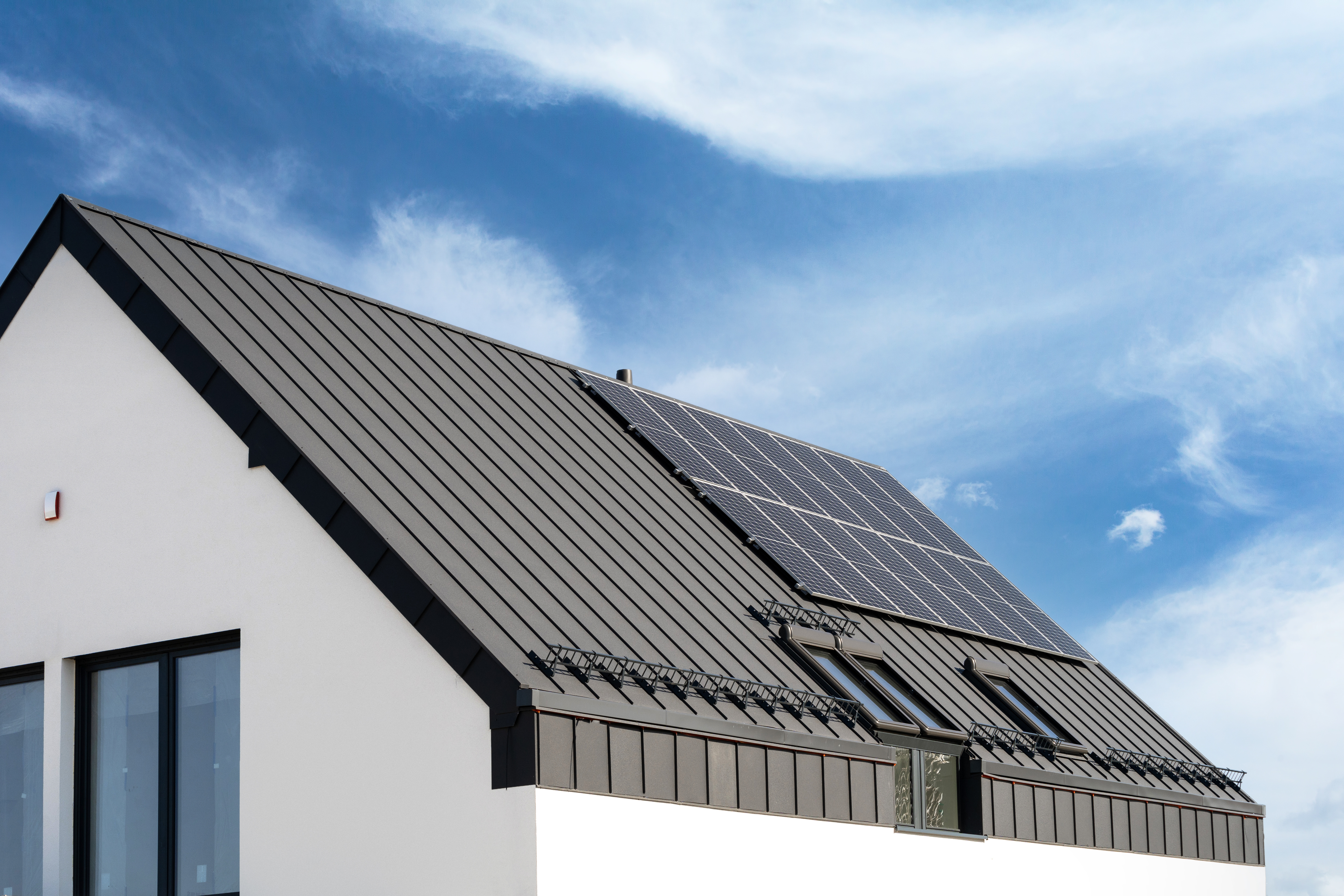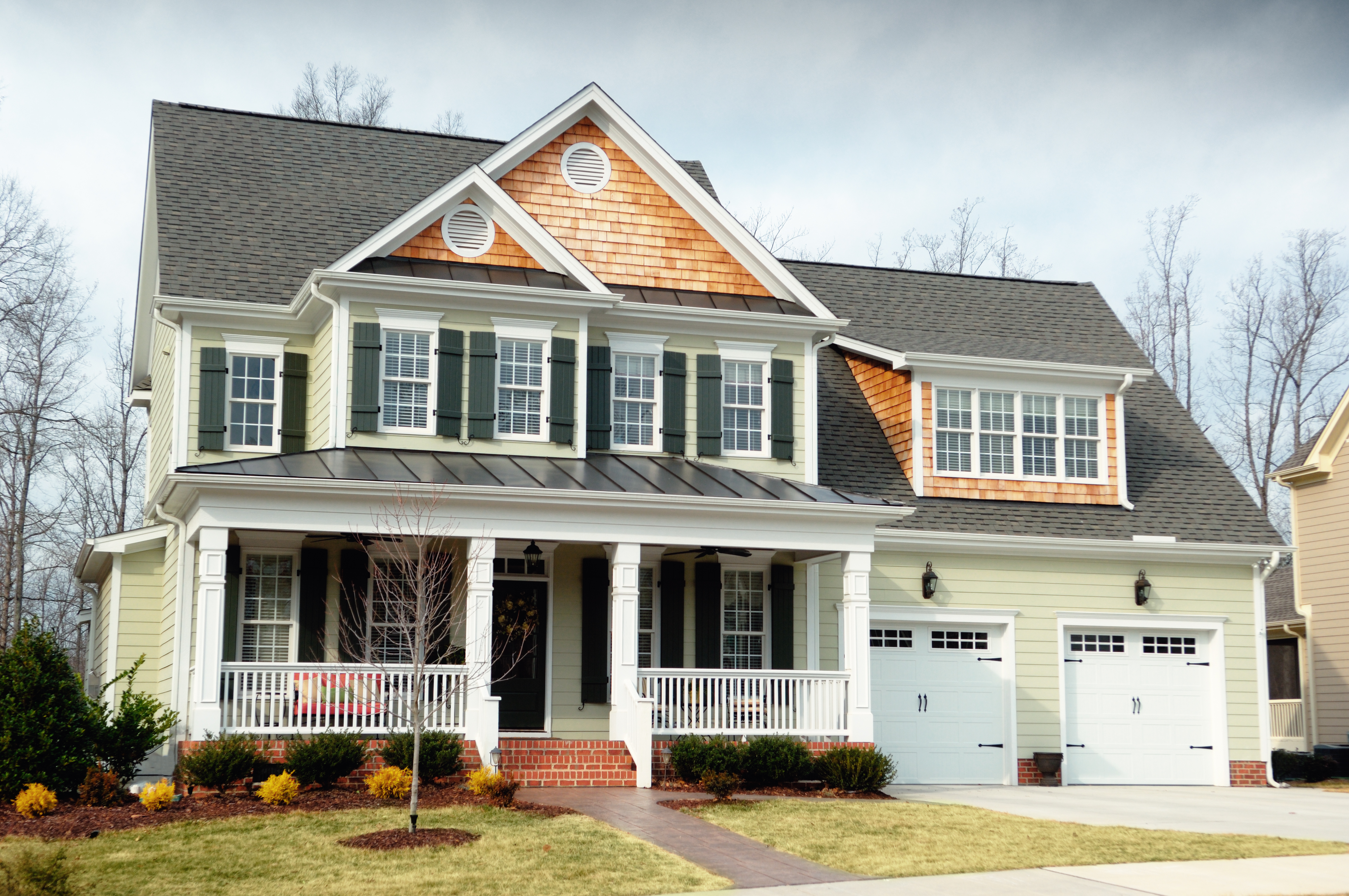
A metal roof can defend your home against Ohio’s varying weather conditions. Learn how much a metal roof costs in Columbus, OH.
Let’s crunch the numbers before you raise the roof


You can use your roof’s length to determine how many trusses you need.
To calculate it, multiply the roof’s length by 12, then divide the result by 24 and add 1.
For example, a 50-ft.-long roof would require 26 trusses.
Hire a pro to install or replace any trusses at your home.
If you’re building or remodeling a truss-supported roof, one of the many things you’ll have to consider is how many trusses you need. Thankfully, there’s an easy way to calculate this—as long as you know the length of your roof and the amount of spacing between trusses. Here’s how to figure it out.
In residential construction, there’s usually 24 inches of on-center spacing between roof trusses. Using that as a guideline, here’s how many trusses you would need for your home, depending on the length of your roof:
| Roof Feet in Length | Number of Trusses Needed |
|---|---|
| 20 | 11 |
| 30 | 16 |
| 40 | 21 |
| 50 | 26 |
| 60 | 31 |
| 70 | 36 |
| 80 | 41 |
If you’re replacing trusses in an existing home, you can determine how many new ones you need simply by counting the old ones. However, if you’re building a new house, you can use a formula to figure out how many trusses you need.
Assuming you leave the standard 24 inches of space between trusses, your roof’s length is the only measurement you need to calculate the right number of trusses for your home. When you have that, you can plug it into this formula:
Number of Trusses = [Roof Length (in feet) x 12] / 24 + 1
For example, if your roof is 40 feet long, you’d need 21 trusses. Adding the extra truss at the end ensures you’ll have one truss at the front of your roof, then another truss for every 24 inches of roof length, and one more truss at the back of your roof.
Measuring your roof for trusses isn’t something you should do alone. Instead, you’ll need to work with a home builder near you or pay for the cost to hire a structural engineer to find your roof’s measurements, calculate the right number of trusses, and pull the necessary building permits. During that process, these professionals will provide all the guidance you need for measuring and installing trusses.

If you have carpentry experience, you could build your own roof trusses instead of ordering them from a truss manufacturer. By doing so, you could save $70 to $560 per truss in material costs (not including labor), depending on the truss size.
However, when it comes to installing trusses, it’s far safer and easier to hire a professional. This is a job that requires you to follow local building codes, pull permits, work at tall heights, and lift heavy objects.
Plus, trusses are a vital part of your home’s framework—and if you make a mistake during installation, it could affect the structural integrity of your house. On average, hiring a pro to frame a roof costs $13,000 to $22,200.
D1 Roofing delivers outstanding service from beginning to end, backed by a strong warranty and expert teams. I highly recommend them for their excellence in meeting and surpassing expectations with unmatched communication. Choosing D1 Roofing was flawless decision
This place took $25,000 for a flat roof job with a five-year warranty and never returned to fix the leaks that were caused by their work. These people are not professionals and should not be doing this type of work. They incorrectly changed the pitch of the roof, and caused more damage than...
While Naaman and Mike were very professional and amicable to work with, there were issues in this project that makes giving a higher rating impossible. We had several communications issues that delayed completion. The roofers accessed the property without communicating with me. Just showed up...
Lyle did a great job removing asbestos shingles from our front porch roof. They worked together with our roofer to make sure that the new roof was able to be installed on the same day that Lyle removed the asbestos shingles.
I have known and used Brian Davis and his crew of Davis Roofing for years on several properties, he is the most honest and transparent and fair roofer you will meet - hands down! His team is prompt, professional, seeks to educate you to make the best decision! Polar opposite of the storm...
It went very well. They were very professional and very knowledgeable about problems and fixes with flat roll down roofs.
An estimator/sales representative came to the home and met with me after the roof was measured. A thorough explanation was given of all the components that would be part of the new roof, as well as what any cost overruns might occur. The job was scheduled two weeks out following our...
Several years ago Pomante replaced the roof of a small area of my house, the porch roof, with a rubber roof. This is a shallow roof and shingles were never able to shed the water appropriately; I needed a rubber roof. At that time they were the only company I could find that would do this...
We had to replace rotten wood on both buildings and shingle the sides of our dormer walls on the main building. Prior to replacing the roofs we had to tear down a deteriorating chimney to the roofline and Muth and Co worked with our hired chimney vendor to complete the project. While...
Davet Roofing really did a great job, they roofed our whole house in one day. They hauled away the debris from the old roof, so we did not have to hire someone to do that and they left the area around the house clean.
From average costs to expert advice, get all the answers you need to get your job done.

A metal roof can defend your home against Ohio’s varying weather conditions. Learn how much a metal roof costs in Columbus, OH.

Dealing with a visibly damaged roof or leak? Learn about roof repair costs in Columbus to see how much you’ll need to budget for a permanent solution.

Learn about roof replacement costs in Columbus and what factors are at play to budget accurately and make sure you’re getting a fair price.

If you’re wondering what a roof truss is, learn about them in this guide, including durability, cost-effectiveness, and what makes them different from roof rafters.

Discover the cost to paint a metal roof, including average prices, key cost factors, and tips to help you budget and save on your next roofing project.

TPO roofs are a great option for your home when properly installed and maintained. Learn some common TPO roofing problems and how to avoid them.